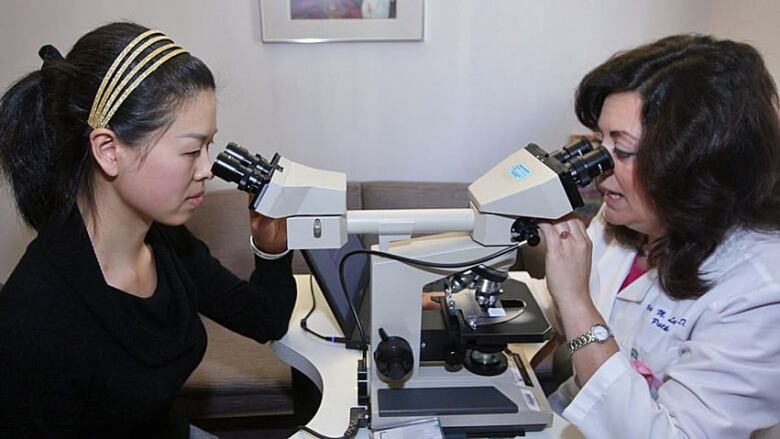Age matters when it comes to screening for cervical cancer
Millions of U.S. women may soon have to decide between a routine Pap or newer cervical cancer screening

Middle-aged women can choose which test to undergo forcervical cancer screening, according to a draft recommendation from aninfluential group backed by the U.S. government.
Women ages 30 to 65 can choose to receive a Pap test every three years or ahuman papillomavirus (HPV) test every five years, according to the U.S.Preventive Services Task Force (USPSTF). The group didn't previously recommendHPV testing without a Pap test.
"Women and providers should continue to recognize that cervical cancer is aserious disease that can be prevented," said Dr. Maureen Phipps, a member of the task force.
"Women who can be identified early through screening can have effectivetreatment for cervical cancer and go on to lead robust lives," said Phipps, whois also chair of obstetrics and gynecology at the Warren Alpert Medical Schoolof Brown University in Providence, Rhode Island.
Cervical cancer was once a leading cause of cancer death for women in theU.S., but the death rate has been cut in half thanks mostly to screening,according to the American Cancer Society (ACS).
An estimated 1,550 Canadian women will be diagnosed withcervical cancerin 2017. An estimated 400 will die from it, according to the Canadian Cancer Society.
TheCanadian Cancer Societysays provincial and territorialscreening programsuse the Pap test to find cervical cancer early and sometimes the HPV test may be used along with it.
The USPSTF last addressed cervical cancer screening in 2012, when it advisedwomen ages 21 to 65 to have a Pap test every three years. Women ages 30 to 65could lengthen the time between screenings to five years if they also receivedan HPV test at the same time.
- Breast and cervical cancer screening and care called unequal
- Stop Pap tests in women under 25, Canadian panel advises
A woman's experience does not differ by the screening; both of the testsrequire analysis of cells scraped from the cervix. But the Pap test also knownas cytology looks for potentially cancerous cells on the cervix. The HPV orhrHPV test looks for the virus that can cause cervical cancer.
After a review of new evidence, the USPSTF recommends that women ages 21 to29 receive a Pap test every three years. For women ages 30 to 65, they recommendeither a Pap test every three years or an HPV test every five years.
Unless a woman is at high risk for cervical cancer, the USPSTF recommendsagainst screening after age 65.
Phipps told Reuters Health that the HPV test may not be right for youngerwomen since infections with the virus often clear up on their own. Additionally,they recommend against screening among most older women since the risk ofcervical cancer is low.
As for now allowing women between 30 and 65 to choose between Pap and HPVtests, the USPSTF writes that the individual tests "offer a reasonable balancebetween benefits and harms."
Challenges practice
They caution that HPV testing leads to much higher rates of additionaltesting than Pap testing. They did not examine the costs of these screenings,however.
The American College of Obstetrician and Gynecologists (ACOG) stillrecommends Pap testing alone or in conjunction ith HPV testing, said Dr. LinusChuang, who is professor of obstetrics, gynecology and reproductive science atthe Icahn School of Medicine at Mount Sinai in New York.
"I don't think this will make American obstetricians and gynecologistschange practice, because they will look at ACOG as gold standard," said Chuang,who was not involved with the new recommendations. "But this will challenge it."
The USPSTF is accepting public comments on its draft recommendations online here untilOct. 9.
With files from CBC News and Associated Press












_(720p).jpg)


 OFFICIAL HD MUSIC VIDEO.jpg)
.jpg)



























































































